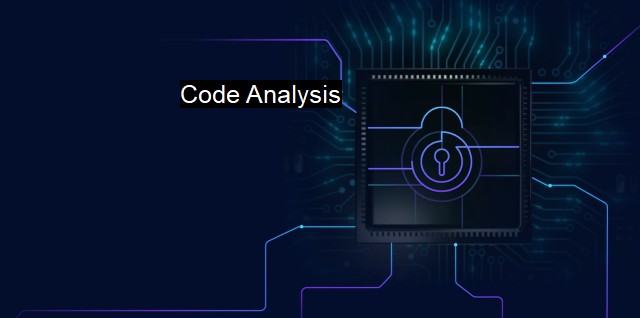What are Code Analysis?
The Power of Code Analysis for Effective Cybersecurity Measures: A Focus on Antivirus Software Development
Code analysis is a crucial process within the field of cybersecurity, particularly for the development of antivirus software. As the name suggests, code analysis refers to the process of analyzing software code with the aim of detecting and eliminating vulnerabilities and security threats. In this context, code analysis has proven to be an essential tool in the development of effective cybersecurity measures.Antivirus software is a critical part of modern computer systems, as it provides protection against viruses, malware, and other types of cyber threats. The effectiveness of antivirus software is largely based on its ability to identify and eliminate potential threats in real-time. This process is facilitated through the use of code analysis to detect system vulnerabilities before they can be exploited by cyber-criminals.
In essence, the process of code analysis involves a careful and thorough review of an application's source code. Code analysis tools are used to scan an application's code to detect any flaws in it. These flaws can include memory leaks, buffer overflows, null pointers, and any other vulnerabilities that can compromise the security of the system.
Code analysis is done in two primary ways, manual analysis and automated analysis. Manual analysis involves having a human security researcher go through the source code line-by-line with the goal of identifying vulnerabilities. Automated analysis involves using software tools to automatically scan the code and alert the researcher if any issues are found.
Automated code analysis is becoming increasingly popular in the field of cybersecurity due to its effectiveness and efficiency. It allows researchers to scan an application's code in a shorter amount of time compared to manual analysis, and can also detect specific vulnerabilities that are difficult to find through manual analysis.
In addition to identifying vulnerabilities, code analysis is also used to improve the overall performance of an application. This is achieved through the identification and elimination of redundant code, which can slow down an application's performance or prolong memory usage. Eliminating redundant code ensures that an application runs smoothly and efficiently, without any performance issues.
code analysis is a critical element in the development of effective cybersecurity measures and antivirus software. It ensures that vulnerabilities and security threats are identified and eliminated before they cause any harm to a computer system. With continuous advances in the field of cybersecurity and machine learning, it's likely that code analysis will continue to play a vital role in protecting computer systems from evolving cyber threats.

Code Analysis FAQs
What is code analysis?
Code analysis is a process of examining the source code of a software application to detect any security vulnerabilities, coding errors, code quality issues, and other potential risks that could pose a threat to cybersecurity.Why is code analysis important in cybersecurity?
Code analysis plays a crucial role in cybersecurity because it helps to identify and address vulnerabilities, which can lead to cyber attacks. By analyzing the code of a software program, cybersecurity professionals can detect and fix weaknesses before they can be exploited by hackers.What are the types of code analysis?
There are several types of code analysis, including Static Analysis, Dynamic Analysis, and Hybrid Analysis. Static analysis involves examining the source code without executing it. Dynamic analysis is the opposite, where the code is executed to identify potential bugs or vulnerabilities. Hybrid analysis combines both static and dynamic analysis methods.How can code analysis be used to improve antivirus software?
Code analysis can help improve antivirus software by identifying vulnerabilities and potential threats in the code before the software is released. It can also be used to optimize the performance of the software and to update the virus definitions used to detect new types of malware. By performing regular code analysis, antivirus software providers can ensure that their products remain effective in protecting users from evolving threats. External Resources
| | A | | | B | | | C | | | D | | | E | | | F | | | G | | | H | | | I | | | J | | | K | | | L | | | M | |
| | N | | | O | | | P | | | Q | | | R | | | S | | | T | | | U | | | V | | | W | | | X | | | Y | | | Z | |
| | 1 | | | 2 | | | 3 | | | 4 | | | 7 | | | 8 | | |||||||